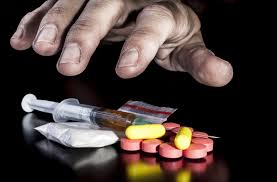The objective of this article is to describe the nature of narcotics, how they are used, and the dangers of using them.
By: Susan Adams, M. Ed.
The Use and Abuse of Narcotics
Summary: Medically speaking, narcotics are the drugs derived from opium such as codeine and morphine and heroin. There are synthetics which are abused as well.
Use is usually by injection though the drugs may also be sniffed. Withdrawal symptoms can be severe and overdoses can easily occur. This article describes the nature of these issues.
Ninety percent of narcotics abuse involves heroin. Sometimes abused are the synthetic narcotics like meperidine (Demerol) and methadone. Cough medicines containing codeine and paregoric which contains opium, also are sought by abusers. There is a large range of abusers who obtain their narcotics legally, from doctors who deal with pain. People with chronic pain are possible abusers. One finds that the offices of doctors who deal with pain management watch this issue sometimes in greater degrees and sometimes not. Recently, my husband had his hip replaced. He was in a great deal of pain. We searched for the best surgeon and in doing so, left one particular office. That office informed him that they would not refill pain medicine. That he would have to do the surgery, which was clearly indicated, or go without pain medication. There was a disclaimer on the forms of the new office which stated that if anyone were caught getting prescriptions in more than one office, their status would be terminated. It seems clear that it is well known that narcotics are physically addicting with painful withdrawal symptoms.
Heroin is injected by needle either just under the skin or into a muscle or directly into a vein. "Skin-popping", "muscling" and "main-lining" respectively. A white powder with a sharp, bitter taste, the drug must be dissolved in warm water before entering the needle. A spoon and matches are frequently used. Some addicts sniff the powder into the nostrils, where the drug is absorbed through the mucous membranes.
The initial effect of a shot of narcotic is a pleasant relaxation; higher doses result in dullness and stupor. Heroin slows down the activities of the body organs. Therefore, it may reduce hunger, thirst, and sex drive.
Withdrawal symptoms begin about four to six hours after an injection. Full-blown symptoms, which may include shaking, sweating, vomiting, runny eyes and nose, muscle aches, chills, abdominal pains, and diarrhea, begin at about twelve to sixteen hours after a shot. The intensity of the symptoms depends on the addicts drug dependence. Tolerance to the drug develops over time which then requires larger doses to avoid the withdrawal pains.
Heroin is EXTREMELY DANGEROUS. If it is bought on the street, it is often adulterated and contaminated, sometimes with dangerous substances. If unadulterated, it may be stronger than the individual expects or is accustomed to. Such an overdose, which can easily happen when individuals get better substances than they are accustomed to, can kill. Overdoses occur for other reasons as well. An unsterile needle and contamination of other paraphernalia used by an addict add the dangers of various infections; liver damage due to hepatitis is common among heroin users. There are also legal issues in regard to possession of the drug which is a crime,and also because addicts are prone to become criminals in order to pay for their habit. Heroine has some slang tags which include, "junk", "smack", "horse", "scag", "stuff", "Harry", "joy powder", and "H".
